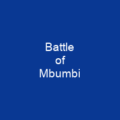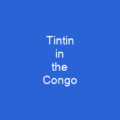Congo: A River, A Continent, And More
Have you ever wondered about the many faces of Congo? It’s not just a name; it’s a river, a country, and so much more! Imagine if every time someone mentioned “Congo,” they were talking about something entirely different. That’s exactly what happens with this multifaceted term.
The Congo River: A Lifeline of Africa
Let’s start at the source. The Congo River, one of the world’s longest rivers, flows through central Africa like a giant artery, nourishing and sustaining millions of lives. Can you imagine how vital this river is to the continent? It’s not just water; it’s life itself!
The Congo Basin: A Hidden Gem
But the Congo River isn’t just a river; it’s part of an even larger entity—the Congo Basin. This vast sedimentary basin is home to some of the world’s most biodiverse ecosystems. It’s like a hidden treasure, waiting to be explored and understood.
The Democratic Republic of Congo: A Country in Crisis
Now, let’s move on to Congo-Kinshasa, officially known as the Democratic Republic of the Congo (DRC). This country is often overshadowed by its struggles but holds immense potential. Can you imagine what it would be like if this nation thrived? It could change the face of Africa!
The Republic of Congo: A Smaller Neighbor
Just to the northwest, there’s Congo-Brazzaville, or as it is officially known, the Republic of the Congo. This smaller country shares a similar history but has its own unique challenges and opportunities. How do you think these two Congos compare?
African Kingdoms: A Rich History
Delve into the past with Kingdom of Kongo, which thrived from 1390 to 1914, or the Kingdom of Kakongo, which lasted until 1885. These kingdoms were once powerful and influential but are now often forgotten. What stories do you think these places could tell us today?
Colonial Legacies: A Bittersweet History
The Congo Free State (1885–1908) was a dark chapter in history, but it also paved the way for modern-day nations. The Belgian Congo and French Congo were former colonies that now form parts of the Democratic Republic of the Congo and the Republic of the Congo. How do you think these colonial legacies have shaped their current identities?
Geographical Oddities: A Curious World
From Congo Canyon, a submarine canyon, to towns named after it in places like Alabama, Missouri, and Pennsylvania, the name “Congo” has found its way into unexpected corners of our world. Can you imagine how these places got their names? It’s almost as if they’re connected by an invisible thread!
Language and Ethnic Groups: A Rich Cultural Tapestry
The Niger–Congo languages family is one of the largest language families in Africa, with over 1,500 languages. The Kongo language, a Bantu language, is spoken by millions. How do you think these languages and ethnic groups contribute to the rich cultural tapestry of Africa?
Arts and Entertainment: A Multifaceted World
In music, bands like The Congos, albums named “Congo,” songs titled “Congo,” and even a pinball machine called “Congo” all add to the cultural richness. How do you think these artistic expressions reflect the broader themes of the name “Congo”?
Documentaries, Novels, and Films: A Visual Story
The Congo River has inspired many works of art, including Michael Crichton’s novel and its film adaptation. The documentary series “Congo,” a nature show, and the 2018 film “Congo – A Political Tragedy” all offer different perspectives on this complex region.
A People: The Kongo Ethnic Group
The Kongo people, a Bantu ethnic group, have a rich history and culture. How do you think their stories are represented in the broader narrative of Africa?

In conclusion, the name “Congo” is a gateway to understanding not just one place but an entire continent and its rich history. It’s a story of rivers, kingdoms, languages, and people—each with their own unique tale to tell. As we explore these different facets of Congo, we uncover layers of complexity that make this term both fascinating and profound.
You want to know more about Congo?
This page is based on the article Congo published in Wikipedia (retrieved on February 25, 2025) and was automatically summarized using artificial intelligence.







